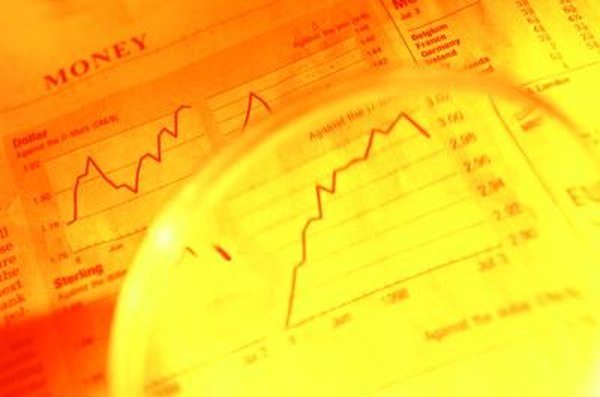Risks of Buying Stocks Compared to a Treasury Bill
While stocks can make up the bulk of your portfolio, T bills can help you balance your investments and reduce risk.
John Foxx/Stockbyte/Getty Images
Both stocks and Treasury bills allow investors to earn a return on their investment to help meet financial goals, including retirement. When you buy a share of stock, you are purchasing a share of ownership in a company. When you buy a Treasury bill, you are making a loan to the U.S. government. Each of these activities comes with its own set of risks in terms of repayment, default and rate of return.
Stock Overview
When you purchase stock, there is no set rate of return on investment. Once you buy stock, your potential returns come from increases in equity or in dividend payments made by the company. There is no guaranteed return or interest rate like those found on bonds, bills and notes. A Treasury bill serves as a way for the government to take out short-term loans to finance a wide variety of projects. These bills comes with terms ranging from four weeks to one year. Investors buy the bills at a discount, then redeem them for face value when the term on the bill is up. For example, a $1,000 bill may come at a discounted price of $950. When an investor redeems the bill at the end of the term, he receives $1,000 from the government. This $50 acts as a return on the investment.
Risk of Stocks
Stocks are inherently risky and come with no guarantees. If you purchase a share of stock in a company and the company goes bankrupt or suffers from a major loss, you could easily lose 100 percent of your investment. Anything from a scandal to bad decisions by company leaders or even a weather emergency can significantly impact a company's stock price. Even if the price remains stable, you may never earn a premium or return on your investment.
Risk of Treasury Bills
Treasury bills are backed by the U.S. government. That means that the risk of nonpayment is virtually nonexistent. As long as the U.S. government remains in place, you will receive both your initial investment and a return on your investment if you hold the bill to term. In fact, "USA Today" calls Treasury bills the safest form of government loan because of their relatively short term. Compared to notes or bonds, which represent long-term loans, treasury bills pose virtually no risk to investors.
Risk vs. Return
Due to the higher risk associated with stocks, they traditionally provide a much higher return than Treasury bills. For example, stocks returned an average of 11.2 percent annually from 1928 to 2011, while Treasury bills returned just 3.66 percent, according to New York University's Stern Business School. This illustrates a lesser known risk of buying Treasury bills--the potential opportunity cost in terms of smaller returns compared to investing in stocks.
References
Writer Bio
Emily Beach works in the commercial construction industry in Maryland. She received her LEED accreditation from the U.S. Green Building Council in 2008 and is in the process of working towards an Architectural Hardware Consultant certification from the Door and Hardware Institute. She received a bachelor's degree in economics and management from Goucher College in Towson, Maryland.

